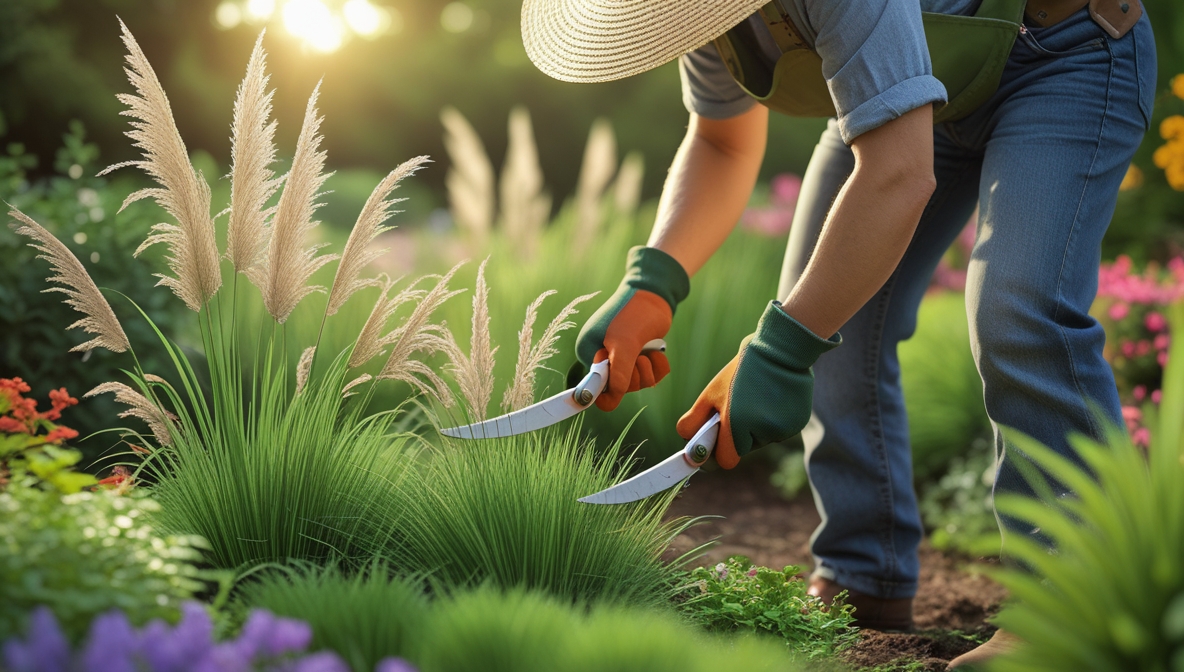Ornamental grasses add a touch of elegance and texture to any garden, but sometimes, they just don’t quite fit the picture. Whether it’s overgrown, diseased, or simply in the wrong spot, you might find yourself needing to remove it. This guide will walk you through the various methods for effectively killing ornamental grass, from the simplest to the most involved. We’ll also cover why you might want to take this step and what to do afterward to prevent future problems.
Contents
Ornamental Grass: The Killing Blow
Getting rid of ornamental grass can be a surprisingly straightforward process, but it’s crucial to pick the right tool for the job. Relying on harsh chemicals might seem tempting, but they can potentially damage the surrounding environment. Think about the size of the patch and the type of grass when choosing your method. A small, stubborn clump might respond better to a targeted herbicide, while a larger area might benefit from a more comprehensive approach.
Sometimes, a little patience can go a long way. If the grass is just a bit out of control, consider aggressive mowing or regular cutting to weaken it. Consistent removal of growth can significantly impact the grass’s ability to sustain itself over time. But always keep in mind the potential for damage to nearby plants.
Why You Might Want to Kill It
There are several reasons why you might choose to eliminate ornamental grass from your garden. Perhaps it’s taking over space that other plants need, or its appearance has deteriorated due to disease or pests. Sometimes, the original design intent of the garden has changed, and the grass simply no longer fits the aesthetic.
Additionally, some ornamental grasses can be aggressive spreaders, potentially crowding out desirable plants or causing issues with walkways and other landscaping features. Identifying the specific reasons for removal will help you choose the most effective and environmentally sound method.
Methods for Ornamental Grass Removal
The best method for removing ornamental grass depends on the size and type of grass, as well as your comfort level with different tools. For smaller clumps, hand-pulling is a good option, but this can be difficult with deep root systems. Digging up the entire plant and removing the roots is often the most effective, though labor-intensive way to eliminate the grass completely.
Alternatively, herbicides can be used to kill the grass. Follow the product instructions carefully and wear appropriate protective gear. Be mindful of potential impact on nearby plants and the surrounding environment. If the grass is part of a larger landscape design, consider consulting with a professional landscaper to determine the best approach.
Aftercare & Prevention
Once you’ve successfully removed the ornamental grass, follow up with appropriate aftercare to prevent regrowth. This might involve digging out any remaining roots or using a herbicide to treat the affected area. A layer of mulch can also help prevent new shoots from emerging.
If the issue was due to disease or pests, consider inspecting other nearby plants for similar problems and taking preventative measures to avoid future outbreaks. Regular maintenance and thoughtful plant selection can often prevent the need for removal in the first place.
Removing ornamental grass can be a necessary gardening task. By understanding the reasons for removal, employing the appropriate methods, and following up with proper aftercare, you can successfully address the problem and restore a more desirable aesthetic to your garden. Remember to always prioritize safety and environmental responsibility when undertaking any removal project.






